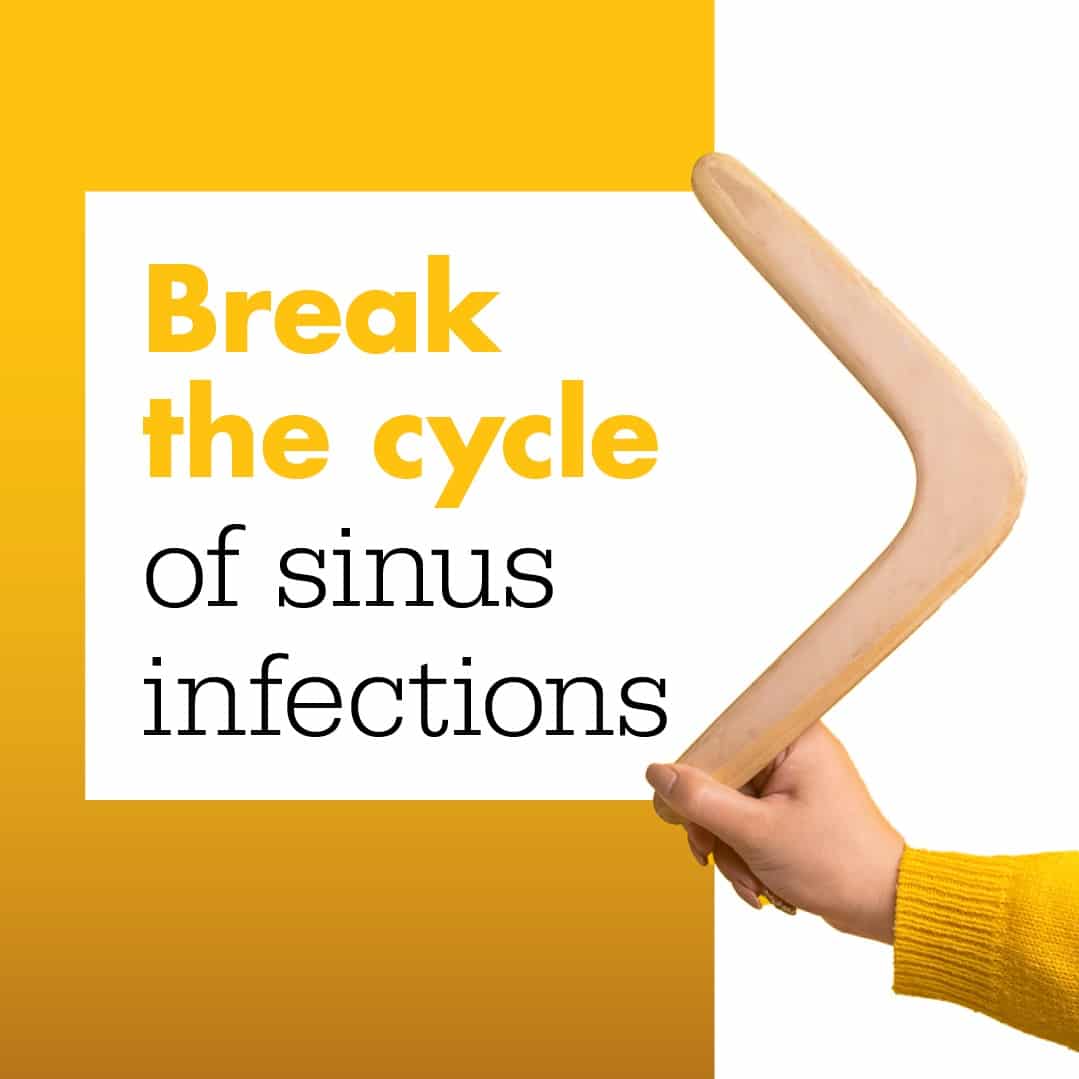Do you have chronic sinus problems or more than five sinus infections a year?
Do you have sinus headaches, facial pressure over the sinuses that disturbs your sleep at night, nasal congestion, difficulty breathing through your nose, postnasal drip, or a persistent cough?

Have you tried medicines such as antibiotics, steroids, nasal sprays, sinus rinses, antihistamines, and decongestants without relief?
Have you had prior sinus surgery but continue to have symptoms?
Are these symptoms interfering with your enjoyment of life?
Balloon sinuplasty may be the answer for your sinusitis.
Frequently Asked Questions
What is balloon sinus dilation?
A sinus balloon similar to a heart catheter is placed through the nose into each sinus and inflated to dilate the sinus opening, so it does not clog when your nose gets stuffy.
Who is an ideal patient?
Those with chronic and repeat sinus infections where medications are not controlling or preventing the patients’ symptoms. Facial pressure over the sinuses which disturbs sleep is often resolved with this procedure.
How much experience does Dr. Rosner have with the balloon procedure?
Dr. Rosner has performed hundreds of balloon procedures. He has traveled all around the United States to learn the best techniques. He has developed this into a safe and effective procedure.
What happens on the procedure day?
For this in-office procedure, patients eat a normal breakfast and a light lunch. Gatorade is recommended with breakfast for good hydration. Patients are given oral medication for sedation. They then undergo a five-step numbing process which includes numbing spray gels and injections. Patients are observed after the procedure until they are deemed ready to go home. Many patients sleep for a while after the procedure until the oral sedation has worn off.
Is this painful?
Most patients find the procedure easier than a dental filling. They typically take little or no pain medication after the procedure.
What is recovery like?
Patients are sleepy the day of the procedure and are asked not to drive for 24 hours. A drip pad is placed under the nose until oozing stops.
Will this require packing in the nose?
No, Dr. Rosner uses endoscopic techniques that do not require packing.
Does insurance cover balloon sinuplasty?
Most insurances cover balloon sinuplasty. Prior to any procedure, we will check your insurance for coverage and determine deductibles and copays.
Is the balloon left in?
No. The balloon is inflated for a few seconds, then deflated and removed.
Can septoplsty and turbinates also be performed during this procedure?
Yes, Dr. Rosner can perform these at the same time as your balloon sinuplasty.
How long will I need to be off work?
For balloon sinuplasty, most patients are out of work for a day. When septoplasty and turbinates are performed at the same time as sinuplasty, a few extra days may be needed.
When can I fly?
Most patients are ready to fly in a few weeks. Patients also treated for nasal polyps may need a little more time before being ready to fly.
Can balloon sinuplasty be performed if I have had prior sinus surgery?
Yes, most revision sinus procedures can be treated with balloon sinuplasty.
Is image guidance available in the office?
Yes. Dr. Rosner has a state-of-the-art image guidance system Scopus in the office. This improves patient safety by allowing tracking of tools during the procedure.



